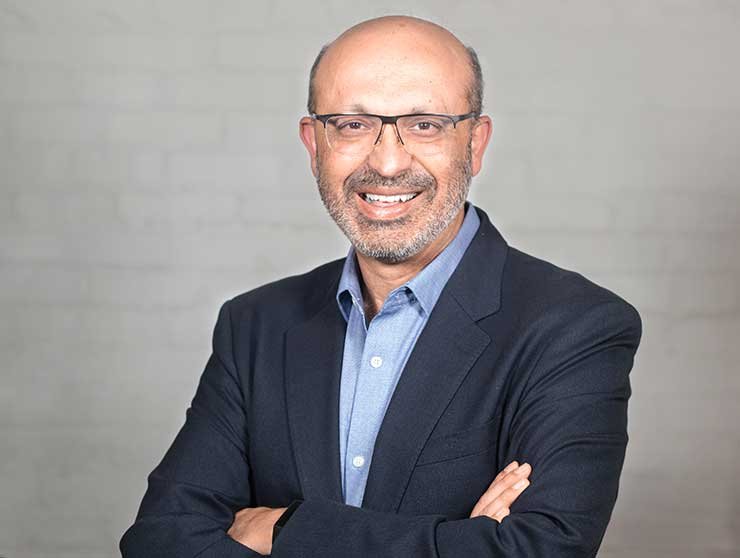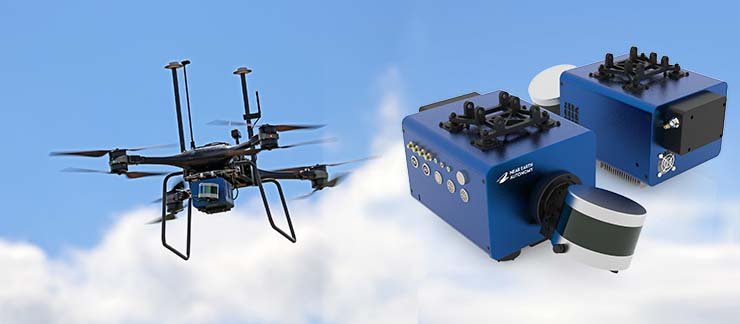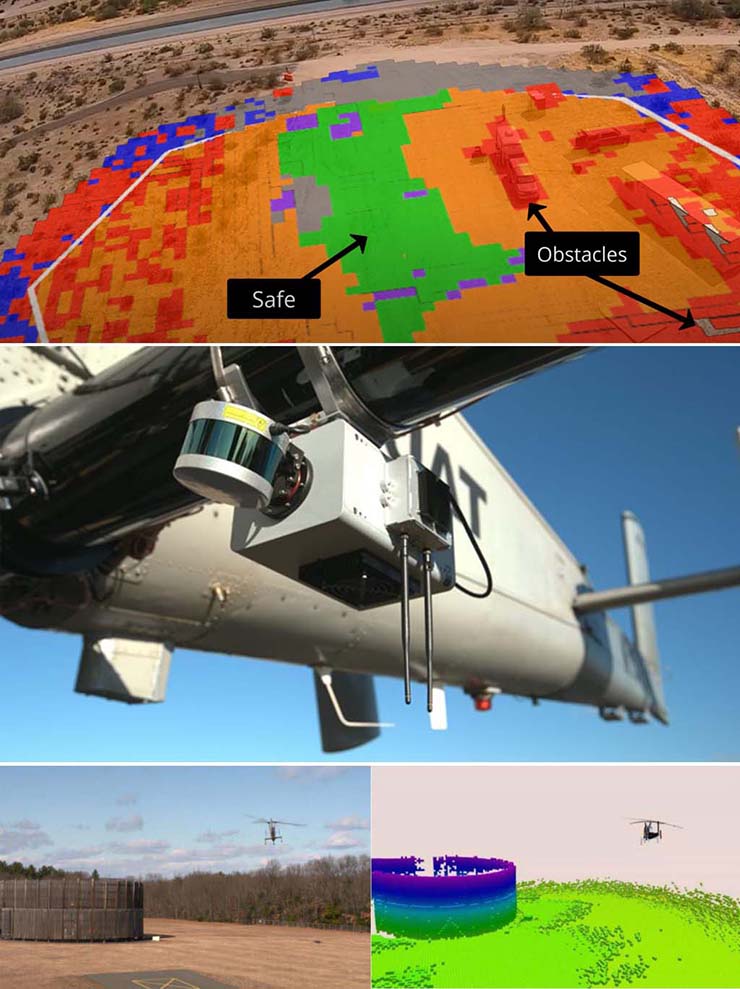
Sanjiv Singh, CEO, and Co-Founder of Near Earth Autonomy leads the technical and business strategy for the company. He brings 25 years of experience in autonomous ground and air vehicles operating in challenging environments. Key areas of his expertise include perception and planning for air and ground vehicles. In addition, he specializes in the coordination of teams of (human and robotic) agents performing complex tasks. Sanjiv obtained his PhD in Robotics at Carnegie Mellon University in 1995 and has since been on the faculty at the Robotics Institute. Sanjiv is the founding editor and the Editor-in-Chief of Field Robotics, a new open-access journal. Sanjiv has co-founded four technology companies.
In an interview with Ajit Thakur, Editor of Raksha Anirveda, Near Earth CEO Sanjiv Singh spoke on a wide range of issues including his readiness to collaborate with Indian companies. His company works with customers to provide flight-proven core technologies to achieve their inspection and mobility needs. Applications include enabling aircraft to navigate safely without crew and inspecting high-value assets autonomously. Excerpts:
SS: Tell us the story behind the inception of Near Earth Autonomy and its journey so far?
A: There was an opportunity in the early 2,000s to take technology that we had been using for autonomous ground vehicles to enable aircraft flying at low altitudes. In particular, there were some US Department of Defence programs looking at new applications of low flying aircraft. Few people were working in this area at that time so we got a chance to get started.
While I was at Carnegie Mellon, a large program came up that couldn’t be done at the University due to its difficulty and scale. It involved the full-scale automation of a helicopter making it go from point A to B in difficult conditions without any human interaction.
We decided to start the company that would address the problem and managed to get a large military helicopter to fly autonomously over the next five years. Since we started, we’ve received consistently increasing commercial and government support as Autonomous Air Mobility has grown in importance. Now, we are looking at various applications across scale, aircraft from one metre to ten metres can be turned into autonomous aircraft for applications ranging from defence to commercial.
SS: Autonomous Air Mobility (AAM) is close to your heart and has been Near Earth’s focus area too. What progress you have made till date overcoming the hurdles associated with futuristic technology? Do you think that AAM will be a reality globally and commercially viable?
A: It is a very challenging area because the development of a new generation of aircraft will take some time. Generally, for a technology to be adopted, it has to be desirable, technically feasible, and economically viable. There is clearly an interest in flying in a straight line from point to point. Technical feasibility is being proven. Getting these solutions to be economically viable will take some time. The early adoption will come in the areas where cost is not the driver. Generally, we see this happening in applications that involve hazards.

SS: Near Earth Autonomy has worked on a wide range of projects in association with NASA and the US Armed Forces. Kindly share the nature of these projects, the outcome, your experience, and lessons learned from these projects.
A: We think of the projects broadly in terms of commercial and military. On the military side, the general requirements are for the aircraft to operate in unstructured environments where it is not possible to rely on infrastructure because the aircraft are required to fly to a completely different location at any time including to sites that are unprepared. In the case of commercial, it is the opposite, and you use the infrastructure to reduce risk and cost. The aircraft is always flying between fixed points in a very structured way
The reliability standards are about the same but on the commercial side, the regulations are significant especially when operating in civilian airspace because that is where the densest populations are.
SS: How has the success been on military platforms?
A: We have been able to implement autonomy on aircraft that can carry anywhere from 5 kg to 2000 kg. On the small side, there is a need to carry small payloads (such as blood and medicines) over long distances. We use hybrid VTOL aircraft with wings and rotors to enable long-endurance (500 km) and precise landing. We have worked on multirotor aircraft that can carry anywhere from 40-200kg. At the lower end, electric VTOL seem to have the reliability to put into regular use. On the higher end of that range, we are working with turbine-powered aircraft because the components to create electric aircraft at that scale are still not ready. We have also been working on autonomy for large helicopters that can carry over 2000kg.
SS: The forward-thinking nature of Near Earth Autonomy’s work has been acknowledged and it reflects in your partnership / association with Kaman, L3Harris, Volocopter, Boeing, Airbus, and more. Kindly provide insights into your business growth story, technology development roadmap along with the wider range of ongoing and future-oriented work being done at Near Earth.
A: The OEMs that you mention typically have a good handle on what we call intrinsic autonomy, which is the automation that proceeds with awareness of the internal state of the aircraft. At Near Earth, we have a lead on what we call “extrinsic” autonomy which is autonomy that operates with situational awareness for complex operations. We think that this kind of autonomy is essential for building the safety case for the next generation of aircraft.
SS: You attended the Dubai Air Show 2021 as a guest speaker at the Boeing Applied Innovation booth. Kindly provide a brief account of the areas you covered in your speech. How was your experience overall at the event?
A: I tried to give an overall explanation about what Near Earth Autonomy does and where our value proposition is and how large the market is for our products.

SS: India is considered to be a lucrative yet challenging aerospace and defence market. It has taken note of the global development work being undertaken in areas of autonomous air mobility / urban air mobility and is preparing itself with regulatory reforms to reap the benefit. Do you think India is ready to play its part both as a beneficiary and technology partner? If not, in your opinion what needs to done by India. Your viewpoints?
A: While I have made several trips to India recently for personal reasons, I don’t know the aviation ecosystem and players. Obviously, India has a large defence market. I have been trying to determine what are the requirements and what are the key applications.
Generally, we see three primary applications for autonomous aircraft:
- Aircraft that can conduct information gathering. On the military side, it is surveillance and on the commercial side, it is some sort of a survey
- Aircraft that carry cargo to places where the land route is long or difficult. Mountainous areas that need to be resupplied for military operations are a good example.
- Strike aircraft that carry weapons.
The general trend is to start with the first use case because this can be conducted with smaller less expensive drones and we see this happening in India.
We have specialized in the second category of cargo transport. It is not clear what the Indian requirements in this area are. In the US there are guiding requirements for the three categories on the military side small (carrying 50 kg), medium (carrying 100 kg), and large (carrying > 1000 kg). This differentiation is important because they correspond to different use cases and can use different types of aircraft.
It is possible the requirements are there, but we have not been able to find them. The smaller class of drones of 40 kgs and 50 kgs we know can be done but it is not clearly articulated across drone size classes.
SS: If there is clarity on the Indian side regarding collaboration in this regard. Your take.
A: Sure. I am happy to participate in any discussions and seminars on this subject. We can collaborate and come and talk to people who are already in this business in India and who build such vehicles in India as long as they have enough resources and traction to serve clients and grow with us.
SS: Do you have any plan to mark your presence and explore the opportunities in Indian aerospace and defence market in near future? Will you be participating in mega defence exhibition DefExpo 2022 @ Gandhinagar, Gujarat?
A: Unfortunately, the Covid situation makes it difficult to participate this year. However, in the future we would be really happy to come for such shows.








